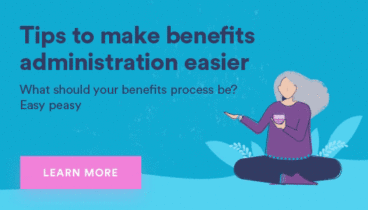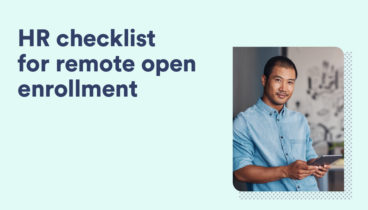Need help managing open enrollment for your remote workforce?

Since the pandemic started in 2020, more and more companies have committed to virtual functions. From deploying different communication channels to virtual benefits programs, organizations that were fully offline have opened up to the online work environment. And as the return to work continues to balance in-office, remote, and hybrid workforces, remote open enrollment has become a concern.
The fact is, by 2028, 33% of the workforce will be entirely remote. And it’s likely that number will continue to grow. So where does this leave organizations when explaining complex employee benefits?
For most HR and small businesses, online open enrollment isn’t exactly new. But with employees spread across the country, conducting a remote open enrollment process to help employees understand benefit changes is a new norm.
Figuring out remote open enrollment
HR teams have always been about communication. But with virtual enrollment, clear and consistent communication is crucial for successful open enrollment.
Typically, the open enrollment season has taken place in office, which includes meetings with HR and benefits representatives. However, this process can now take place in virtual meetings, Slack chatrooms, and other virtual engagement channels.
In fact, there are so many options for businesses to communicate with their remote workforce, that creating a streamlined system can be overwhelming. However, it is possible to run an efficient and informative remote open enrollment program.
1. Streamline your online enrollment system
If you haven’t already invested in an interactive platform for open enrollment and remote employee communication, that should be first up in your to-do list. Not only will this help make the process easier and more efficient for everyone involved, but a solid HR-focused platform is more likely to be compliant.
After all, employees may send sensitive data, such as health-related documentation, social security numbers, and other information through private communication channels. Your ideal online enrollment system should have the capabilities to organize the enrollment process while also protecting your employees’ information.
That said, you’ll want to sit down and map out the timeline for open enrollment. This includes a period before enrollment starts for initial reminders and an introduction to the open enrollment process.
Ideally, you’ll want to give employees ample time to prepare and announce the deadlines for open enrollment and benefits changes in advance. This way when the season finally comes around employees doesn’t feel caught off guard. They’ll feel prepared to make the right decisions for themselves and their families.
While some companies are going completely virtual this season, others have to adjust to a hybrid workforce — which means that some employees work remotely while some continue to work in person. If you have a hybrid workforce, you can hold in-person meetings on open enrollment for employees that are able to show up in person. You can stream it for those who can’t attend.
2. Summarize benefits information
The best way employers can help their workers adjust to a remote open enrollment season is by coming up with a concise informational package. This cuts down on the number of emails and virtual meetings which in turn saves time.
You’ll want to give all employees information about:
- The open enrollment process
- Plan benefits changes
- Answers to common FAQs
While the open enrollment process may be fairly straightforward, documenting benefits packages and FAQs may take some legwork from your team. For example, you’ll want to confirm monthly premium costs, provider networks, and deductibles for company-sponsored plans.
In addition, employees may have questions related to:
- Whether or not they need to go through open enrollment if they plan to renew
- What happens if they miss their enrollment window
- When and if they can make changes to their plan later on
It can be helpful to have a glossary of terms and a benefits professional onboard to help employees sort out the difficult terminology and better understand their plans.
3. Keep key dates on the calendar
On the positive side, a remote open enrollment season also saves time since you don’t have to coordinate a meeting around conflicting schedules. The information will be available to employees no matter where they are or what time of day it is.
A remote open enrollment season also saves time since you don’t have to coordinate a meeting around conflicting schedules. The information will be available to employees no matter where they are or what time of day it is.
In addition, employees who need private consultations with benefits representatives are able to do so whereas that wouldn’t be possible during an in-person meeting. This also allows employees to include family members in the decision making process, which isn’t possible during the traditional open enrollment season.
For your HR team, you’ll want to ensure you leave a few buffer days before the hard deadlines. Unexpected events, projects, or other issues can prevent some employees from submitting their decision on time. Having some extra time in the schedule can help you ensure that everyone is able to submit their plan preferences.
4. Reduce stress
One of the biggest challenges employees may have during a virtual open enrollment season is dealing with stress. Not only do they have to handle their regular workload, but they also have to decode their health insurance needs during the holiday season.
As an employer you can help offset some of this stress by offering extra support such as virtual mental health resources, ensuring paid sick leave, and having a safe space where employees know they can come to you if they need additional help during this time.
By putting together a simple benefits guide, starting early, and following up regularly, as well as providing access to resources like a benefits advisor, you can reduce stress for your employees.
Get your open enrollment checklist
Let’s face it, for human resources professionals, open enrollment is labor intensive and time consuming. To make things easier for your team, access this Virtual Open Enrollment Checklist checklist today.







